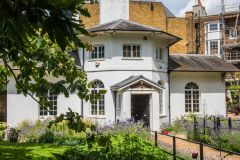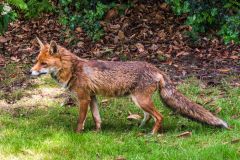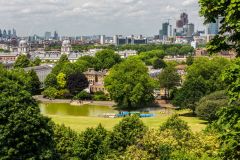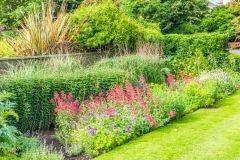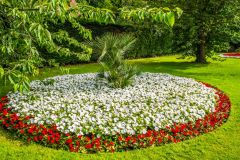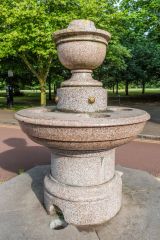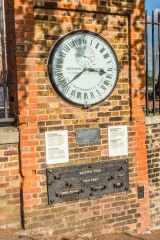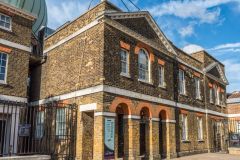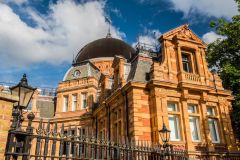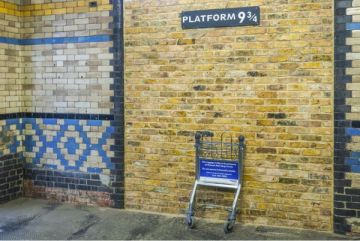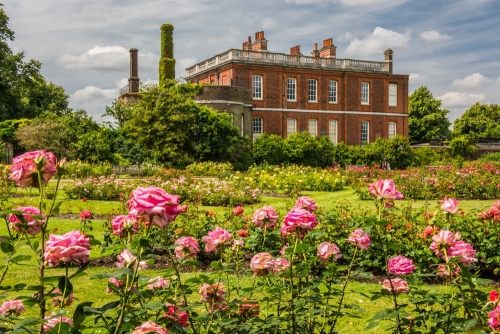
Greenwich Park is the oldest enclosed royal park in Britain and one of eight royal parks in London. Covering 183 acres (73 ha), the park is home to many historic buildings including the Royal Observatory, the Old Royal Naval College, Queen's House Gallery and the National Maritime Museum.
The park rises on the south bank of the River Thames, offering superb views across London and over the Old Royal Naval Palace and Queen's House below. The park is home to a herd of fallow and red deer.
History
The story of Greenwich Park goes back to Roman times when the riverside setting made the area perfect for settlement. The major Roman road of Watling Street ran close to the Park's south-west boundary. Within the park itself are the remains of a Romano-Celtic temple, occupied until the departure of the Romans from Britain around AD 400.
Greenwich faded from history after the departure of the Romans, but we know that the manor of 'Grenevic' was given by Alfred the Great to his daughter Elstrudis. From her, the manor passed to the Abbey of Ghent in Belgium.
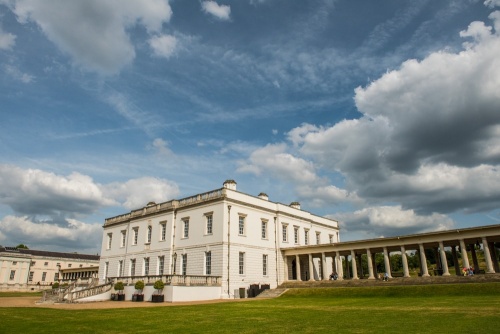
A reminder of this Saxon period is a cluster of 31 barrow mounds, making Greenwich Park one of just 40 Anglo-Saxon cemeteries known in Britain. Some of the barrows were destroyed during building works in 1844 and others have been damaged by growing trees. Another reminder of the Saxon period in Greenwich is the name itself; 'Greenwich' probably comes from the Saxon for a 'green village' or trading settlement.
When Henry V banned foreign monasteries from owning English properties the estate reverted to the Crown.
Greenwich really owes its importance to Humphrey, Duke of Gloucester (1390-1447), the youngest son of King Henry IV, brother of Henry V and uncle of Henry VI. Duke Humphrey built a mansion known as Bella Court and in 1433 got permission from Henry VI to enclose 200 acres of land, creating what we now know as Greenwich Park. Around 1510 deer were introduced to the park to provide sport for hunting and a steady supply of venison.
Duke Humphrey also created an underground system of conduits which still act to drain the marshy areas of the northern park. In 1443 the Duke built a residence that later became the Palace of Placentia (aka Greenwich Palace). During the Tudor period Greenwich Palace became the primary royal residence, and Henry VIII, Mary I, and Elizabeth I were all born there. The park was used by the royal court for hunting and as a venue for outdoor banquets and tournaments.
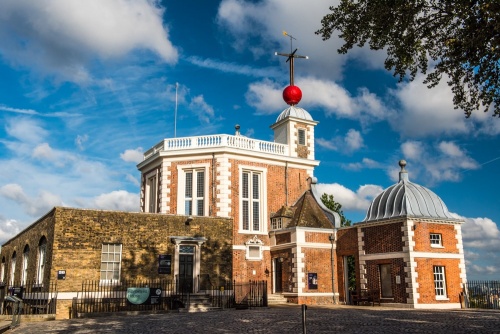
The first royal keeper of Greenwich Park was appointed in 1486, and the first drawing of the park was by a spy sent by Philip of Spain. In the reign of James I, the Queen's House was erected between the royal palace and the park and a brick wall was erected around the park between 1619-1625.
The palace and park suffered during Oliver Cromwell's Commonwealth, but the Restoration of the Monarchy saw new hope for Greenwich. Charles II wanted to create a royal palace and park to rival anything in Europe. He called in Andre Le Notre, the architect of Versailles, to lay out the parterre near Queen's House, and laid out radiating avenues across the park.
The money dried up before Charles II's 'Grand Plan' could be completed, but the park as we know it today began to take shape. Elegant houses began to spring up on the borders of Greenwich Park. In 1675 Reverend John Flamsteed was appointed as the first Astronomer Royal by Charles II.
Flamsteed needed a suitable site for an astronomical observatory and Sir Christopher Wren suggested the highest point of Greenwich Park, then occupied by the remains of Duke Humphrey's Tower. Flamsteed House was built on the foundations of the medieval building and survives today as a part of the Royal Observatory.
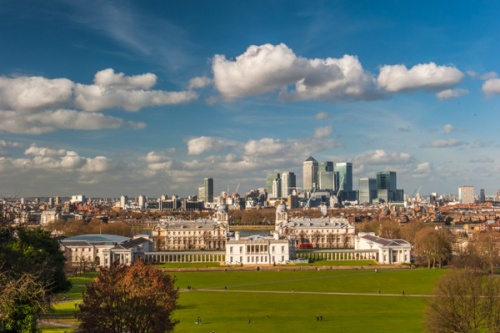
Public Access
Around 1700 official passes to enjoy the park were given to local residents, and after the Royal Hospital was built in 1705 the seamen patients were allowed to enjoy the park as well. Soon London residents were able to access the park on holidays and Greenwich became an extremely popular destination during the bi-annual Greenwich Fair in May and October.
These fairs became known for unseemly behaviour by 'disorderly persons' and there were outraged comments about the fair sparking behaviour that was 'offending against the best feelings of Christian morality'. Though the fair took place outside the park wall, the park gates were opened on fair days.
In 1821, St Mary's Lodge was built in the north-west corner of the park next to St Mary's Gate. This delightful cottage originally provided accommodation for park staff but is now a popular cafe.
In 1863 the Rustic Fountain was erected near Lover's Walk. This decorative fountain is one of several scattered throughout the park. Another drinking fountain was added in 1894 at the meeting point of Blackheath Avenue and Great Cross Avenue. The fountain is made of striking pink granite.
The deer were allowed to roam freely except during holidays when they were penned in the area now known as The Wilderness. The herd was permanently enclosed in the 1920s.
Greenwich Park and nearby Blackheath were designated the first Conservation area in London in 1967. The park, nearby properties and parts of the Greenwich town centre were named as a UNESCO World Heritage Site in 1997.
Royal Indiscretions
Caroline, Princess of Wales, wife of the Prince Regent, served as the Ranger of Greenwich Park in the early 19th century and lived at Montague House in the south-west corner of the park. The Princess took no active role in looking after the park, but her scandalous behaviour while acting as the resident Ranger led to a 'Delicate Investigation' into her lifestyle.
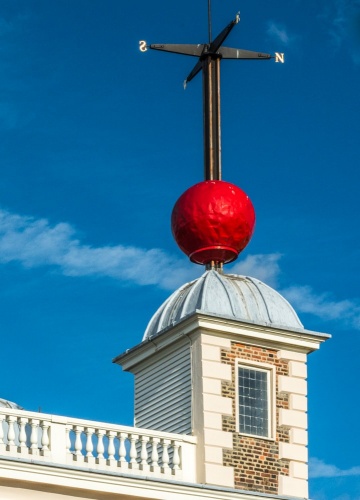
What to see
Royal Observatory
At the highest point of Greenwich Park stands the Royal Observatory, the home of Greenwich Mean Time. The Royal Observatory is part of the National Maritime Museum, which stands at the bottom of the hill. Within the Observatory complex are Flamsteed House, built by Sir Christopher Wren for Sir John Flamsteed, the first Astronomer Royal. Flamsteed was given the task of mapping the heavens in the hope this could help solve the problem of accurately calculating longitude for navigation.
Flamsteed House is famous for the large red 'time ball' attached to its easternmost turret. The time ball was installed in 1833 and drops each day at precisely 1pm as a signal to boats on the River Thames. The museum tells the story of early attempts to calculate longitude and boasts an outstanding collection of early astronomical instruments. The Royal Observatory also boasts a 28-inch reflecting telescope installed in 1893. This is one of the largest such telescopes in the world.
Next to the Royal Observatory is the Peter Harrison Planetarium, the only planetarium in London.
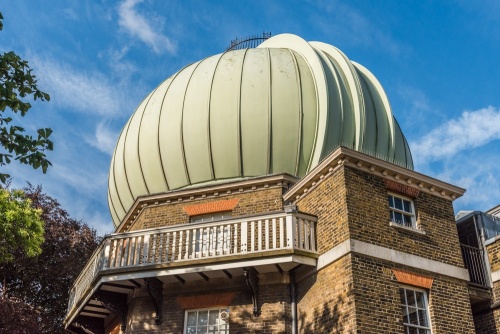
The Meridian Line
Running through the cobbled courtyard of the Royal Observatory is the Prime Meridian, marking Longitude Zero. Every longitude on earth is measured from this line, and from 1884 the Prime Meridian has been the reference for Greenwich Mean Time (GMT). You will usually see a lineup of visitors with their photos being taken with one foot in each hemisphere.
You will also see people lined up to take photos of the Meridian line on the outer wall surrounding the royal observatory, where there is 24-Hour Clock set to Greenwich Mean Time. The clock is accurate to 0.5 of a second.
Beneath the Clock is an Ordnance Survey benchmark plaque marking the official height above sea level, and a set of standardised British Imperial measures.
If you follow the path around the base of the Observatory you will come to the Royal Observatory Garden, a quiet enclave with views of the Planetarium's dome over the trees.
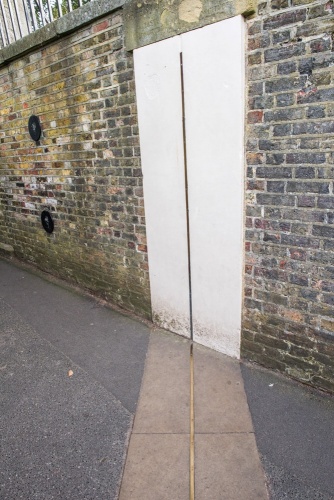
General Wolfe Statue
A stone's throw from the Royal Observatory stands a statue of General James Wolfe (1727-1759), the victor of the Battle of Quebec. Wolfe's parents owned a house on the edge of the park and he spent considerable time here.
Wolfe led the attack on Quebec, which was held by the French. Though the attack was a success and made Canada an English colony, Wolfe died in the battle. The memorial was a gift from the people of Canada and was unveiled by the Marquis de Montcalm, a descendant of the French commander, who also died in the battle.
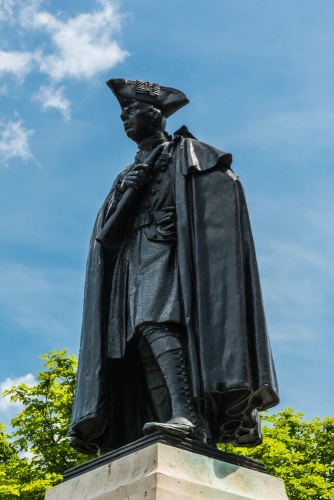
The Queen's Orchard
In the north-east corner of the park is a small walled area that has been a part of the park since the 17th century. It is now an orchard and kitchen garden with a variety of heritage fruit trees planted as early as the 16th century. The orchard boasts a surprisingly large number of fruit trees including apple, pear, plum, cherry, peach, nectarine, apricot, quince, and medlar. The Queen's Orchard is open seasonally to visitors.
Herbaceous Border
Running along the southern boundary of Queen's House is the longest herbaceous border in London planted in 1925. The border measures 200 metres (about 656 feet). The border has been recently designed in an effort to make it reflect the history of Queen's House. It is split into four sections divided by yew-shaped hedges, with each section having a unique colour scheme.
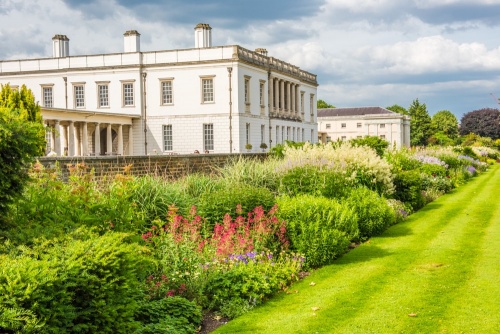
The Wilderness
Occupying the south-east corner of Greenwich Park is The Wilderness, a 13-acre fenced enclosure that is home to the park's herd of roe and fallow deer. Greenwich is the oldest deer park in London. At the present time there are 14 red deer and 16 fallow deer. Visitors are not allowed into the deer enclosure but there are several designated viewing areas where you can get glimpses of the deer.
One unique viewpoint is the Secret Garden Wildlife Centre, an educational centre with one-way glass windows so that deer and other wildlife such as nesting birds, roosting bats, foxes, and wood mice can be watched without them knowing they are being observed.
National Maritime Museum
At the northern boundary of Greenwich Park stands the National Maritime Museum. The museum was opened in 1937 but the building that houses it was built in 1807 as a school for the children of sailors. It is the largest maritime museum in the world and is home to some 2500 models of ships, plus paintings, navigational instruments, uniforms, and historical artefacts telling the rich story of Britain at sea.
Highlights include a collection of royal barges and special exhibits on Admiral Nelson and Captain Cook. You can see the 'Trafalgar Coat', the uniform that Admiral Nelson was wearing when he was fatally wounded at the Battle of Trafalgar in 1805.
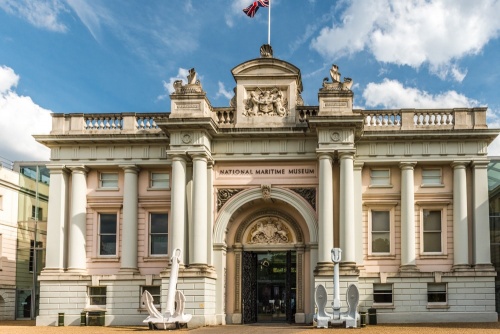
Queen's House
Beside the National Maritime Museum stands Queen's House, built in 1616 by Inigo Jones for Anne of Denmark, James I's queen. The sumptuous neoclassical building includes the Tulip Staircase, a remarkable cantilevered stair thought to be the first ever built in England, and the Cube Hall, built as a perfect cube - just as high as it is wide and long. In 1689 Queen's House became the official residence of the Ranger of Greenwich Park. It is now part of the National Maritime Museum, housing a collection of historical and modern art, often with a maritime theme.
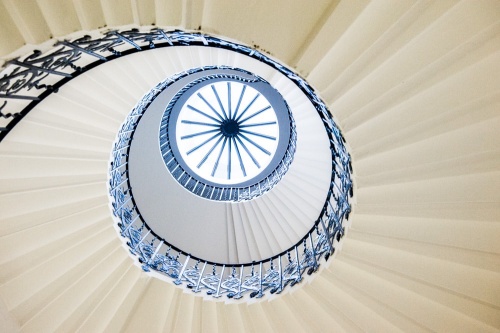
Anglo-Saxon Barrow Cemetery
On Croom's Hill, west of the Meridian Line, is a 6th-7th century Anglo-Saxon burial ground. There are roughly 50 burial mounds, though only a few are easily visible to the naked eye. Archaeologists have discovered a wealth of burial goods including shields, swords, glass beads, and even fragments of hair and wool.
It seems likely that there were pagan burials, not Christians graves. This is one of only 40 Anglo-Saxon burial sites in England and among the largest and most historically important.
Greenwich Park Bandstand
The bandstand was erected in 1891 to the south-east of Great Cross Avenue. Not surprisingly the field around it is known as Bandstand Field. The cast-iron bandstand was made by the Coalbrookdale Company which also made the Coalbrookdale Gates for Kensington Gardens, another royal park in London. This Grade II listed structure is the focal point for a multitude of public events in Greenwich Park.
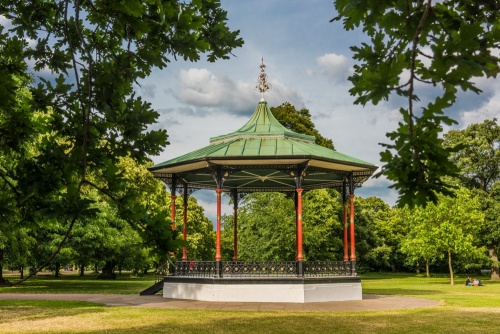
Millennium Sundial
Near the National Maritime Museum and the northern boundary of the park is a large double horizontal sundial erected to mark the Millenium in 2000. It stands beside the Greenwich Meridian line. The double gnomon style lets the sundial tell not only the time of day but the direction of the sun. It was designed by Chris Daniel of the British Sundial Society and consists of a 3 metre high triangular metal gnomon rising over a ground-level mosaic.
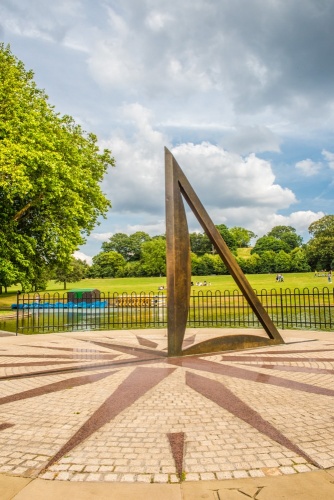
Queen Caroline's Bath
In the south-west corner of the park, near the Rose Garden and Ranger's House, are the remains of a sunken bath that once formed part of Montague House, the residence of Princess Caroline of Brunswick, the estranged wife of King George IV.
Though the site is known as 'Queen Caroline's Bath', she was never crowned as queen. During her residency in Montague House Caroline enclosed 15 acres of park as her private garden. The land was returned to the park in the middle of the 19th century.
Princess Caroline's residency at Greenwich was marked by rumours that she had several affairs and had given birth to an illegitimate child. Eventually her behaviour led to a formal investigation which cleared her of a charge of adultery.
She left England shortly afterwards and Montague House was pulled down in 1815. The only remnant of the house is the sunken bath. In the park wall behind the bath you can make out the outline of blocked windows from Montague House.
The bath was excavated in 2001 and stands inside an iron railing, up against the park wall just south of the Rose Garden. The yew hedge around the bath enclosure marks the outer wall of the bath house and the greenhouse.
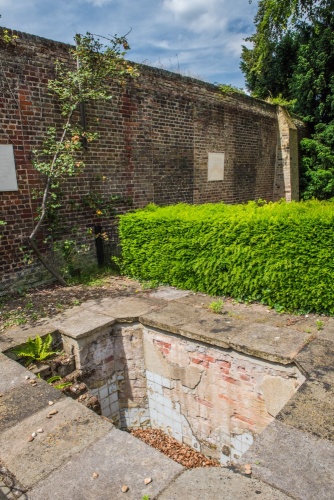
Ranger's House
Looking out over the Rose Garden is Ranger's House, a Georgian villa built in 1699 for Captain Francis Hosier. In 1815 it became a 'grace and favour' residence, offered to royal family members or longstanding servants. Its first resident was Princess Sophia, the first official Ranger of Greenwich Park. The position was a sinecure with no duties.
Ranger's House is cared for by English Heritage and is home to the Wernher Collection of fine art. Here you can see over 700 items ranging from Old Master paintings to silver, jewellery, porcelain and Renaissance bronzes. There are also paintings by British masters such as George Romney and Sir Joshua Reynolds.
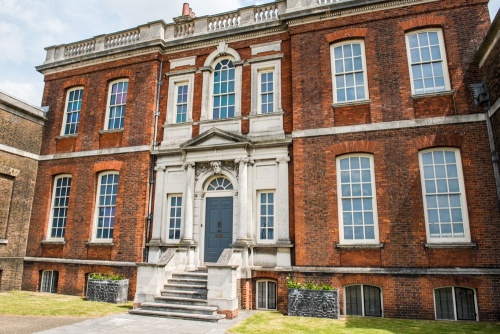
St Mary's Gate
The main visitor entrance to Greenwich Park is this ornate set of early 19th-century wrought-iron gates, designed to resemble foliage patterns with leaves and scrolls. They consist of a large set of double gates in the centre flanked by single side gates set into brick half-piers. The gates are listed Grade II for their heritage interest.
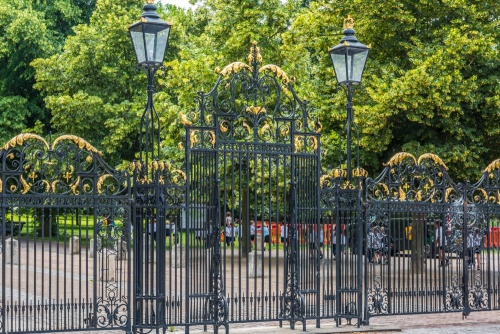
William IV Statue
Just inside St Mary's Gate on King William Walk is a statue of King William IV (1765-1837) in the uniform f a high admiral. The statue was erected in 1844 at the junction of King William Street and Cannon Street in the City of London. Increasing traffic flow made the statue a hindrance so it was moved to Greenwich Park in 1936. It was sculpted from granite by Samuel Nixon.
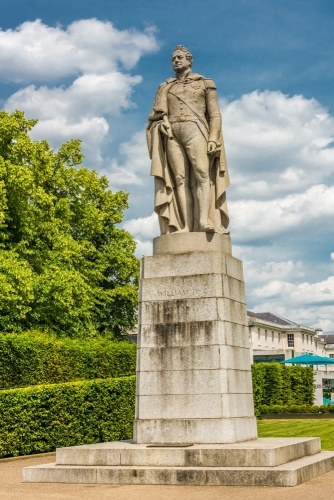
Roman Temple
At the junction of Great Cross Avenue and Bower Avenue stand the remains of a Roman building thought to have been a temple. The temple stood close to the line of Watling Street. one of the great Roman roads of Britain and the main route between London and the south coast ports.
The Roman site was discovered during routine maintenance work in 1902. Archaeologists investigated and found a section of mosaic floor, pottery fragments, painted wall plaster, a fragment of a life-sized statue, and over 300 coins spanning the 1st to the 5th century. In 1999 Tony Robinson and the Time Team investigated and uncovered carved fragments and a stamped tile. An information panel illustrates how the temple probably looked.
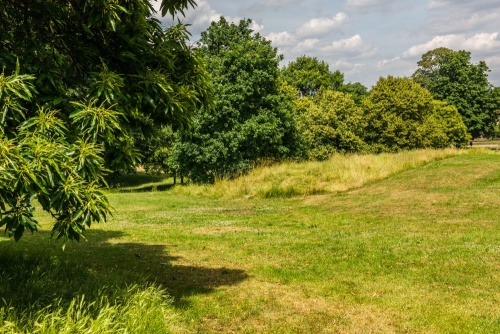
Vanbrugh Castle
The Roman temple is near Maze Hill Gate on the south-east side of Greenwich Park. Just across the road from the ornamental gateway stands Vanbrugh Castle, built as his own residence by the Baroque architect Sir John Vanbrugh, who also designed Blenheim Palace and Castle Howard.
Unlike those two stately homes, Vanbrugh chose to create his own house in a medieval Gothic style, with battlemented towers to give it the air of a castle. Vanbrugh Castle is a private home, but it is fascinating to see what such a famous architect designed for himself. You can get excellent views of the Castle from the gateway, without leaving the park.
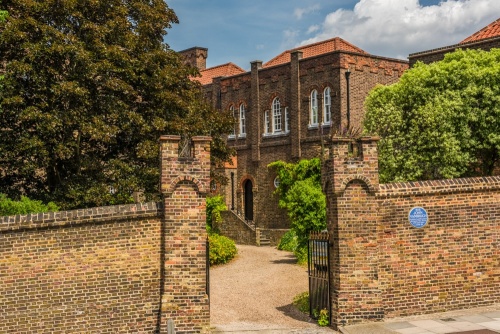
Queen Elizabeth's Oak
If you take the central path from Maze Hill Gate you soon come to Queen Elizabeth's Oak, a fallen tree that was probably planted sometime in the 12th century. Elizabeth I was born at nearby Greenwich Palace and legend says that she was fond of picnicking near this oak tree.
Tradition suggests that her father Henry VIII and her mother Anne Boleyn danced around the tree during their courtship. It is certainly a believable story, for Greenwich Palace was one of the most favoured royal residences.
The tree died in the Victorian period, but was propped to stay upright. It is said that the large hollow trunk made a useful holding cell for people arrested in the park. The tree fell in 1991 and an iron railing was set up to protect it from damage while it slowly decomposes. Inside the railing is a memorial plaque reading:
This ancient tree known as Queen Elizabeth’s Oak is thought to have been planted in the 12th Century and it has been hollow for many hundreds of years.
It has traditions linking it with Queen Elizabeth I, King Henry VIII and his Queen Anne Boleyn, it may also have been a lock-up for offenders against park rules.
It died in the late 19th Century and a strong growth of ivy supported it until it collapsed in June 1991.
The English Oak alongside was planted by His Royal Highness the Prince Philip, Duke of Edinburgh KG, KT Baron Greenwich on 3rd December 1992
The tree was donated by Greenwich Historical Society to mark 40 years of the reign of Queen Elizabeth II.
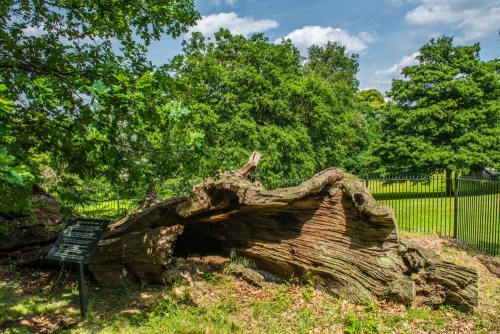
One Tree Hill Conduit Head
Downhill of Queen Elizabeth's Oak and set into the sloe of One Tree Hill is a 17th-century conduit head in classical style designed by Nicholas Hawksmoor, who acted as the Clerk of the Works at Greenwich between 1698 and 1735. Hawksmoor designed it as part of the water supply for the Royal Hospital of Seamen (now the National Maritime Museum).
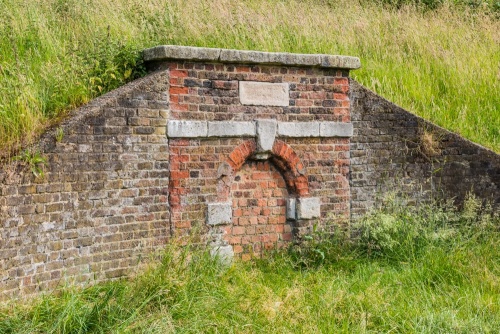
Getting There
The easiest way to reach Greenwich Park is by Dockland Light Rail (DLR) to Cutty Sark. For overground rail services Greenwich and Maze Hill Stations are the same distance from the park. If you are coming by car there are three regular car parks and three disabled car parks on Blackheath Avenue, accessed through Blackheath Gate on Charlton Way, on the southern boundary of the park.
From Greenwich Park it is extremely easy to reach the major historic attractions in Greenwich on foot. Very close to the park are the Fan Museum and St Alphege's Church, while a few minutes further away are Discover Greenwich, the Old Royal Naval College, and the Cutty Sark.
The park is open from 6am every morning for pedestrians and from 7am for cars.
About Greenwich Park
Address: Charlton Way,
London,
Greater London,
England, SE10 8QY
Attraction Type: Countryside - Royal Park
Location: The easiest access is by DLR to Cutty Sark or rail to Greenwich station.
Website: Greenwich Park
Royal Parks
Location
map
OS: TQ389773
Photo Credit: David Ross and Britain Express
Nearest station: ![]() Cutty Sark - 0.5 miles (straight line) - Zone: 2.5
Cutty Sark - 0.5 miles (straight line) - Zone: 2.5
HERITAGE
 We've 'tagged' this attraction information to help you find related historic attractions and learn more about major time periods mentioned.
We've 'tagged' this attraction information to help you find related historic attractions and learn more about major time periods mentioned.
Find other attractions tagged with:
NEARBY HISTORIC ATTRACTIONS
Heritage Rated from 1- 5 (low to exceptional) on historic interest
Royal Observatory, Greenwich - 0 miles (Museum) ![]()
Queen Elizabeth's Oak - 0.2 miles (Countryside) ![]()
Queens House - 0.3 miles (Historic Building) ![]()
National Maritime Museum - 0.3 miles (Museum) ![]()
Queen Caroline's Bath - 0.3 miles (Landmark) ![]()
Ranger's House - 0.3 miles (Historic Building) ![]()
St Alfege's Church, Greenwich - 0.4 miles (Historic Church) ![]()
Old Royal Naval College Greenwich - 0.5 miles (Historic Building) ![]()
Nearest Holiday Cottages to Greenwich Park:
Leaves Green, Greater London
Sleeps: 6
Stay from: £871 - 3614
Culverstone Green, Kent
Sleeps: 2
Stay from: £356 - 1253
More self catering near Greenwich Park
